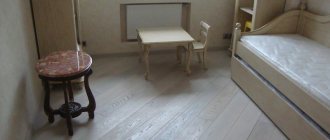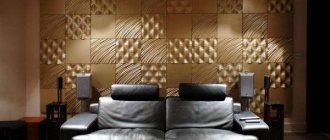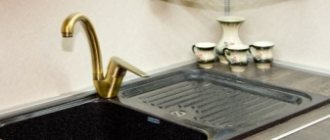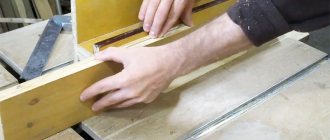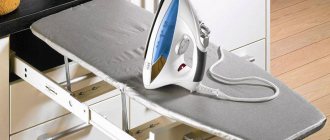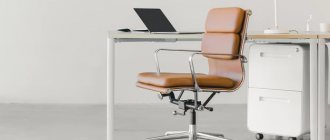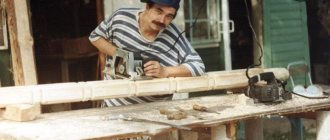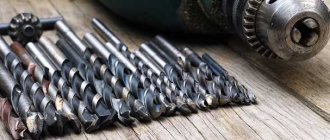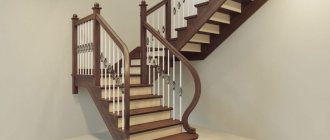There is a cutting board in any kitchen, and wood products have the most presentable and reliable appearance. Such boards are made from solid pieces of wood, cross cuts, small glued blocks or plywood: the latter option is the most inexpensive, but has a shorter service life.
Regardless of the manufacturing technology, the question remains relevant: how to treat a wooden cutting board so that it does not become unusable? Only special impregnations will help prevent cracking of utensils and the colonization of fungus and mold in the wood.
How to treat a wooden cutting board?
When choosing a finish, the vast majority of craftsmen give preference to compositions made from natural ingredients, primarily oils. There are many options for how to impregnate a new board, but practice shows that the most effective solution in this matter is to use Vaseline oil, which is not difficult to find in a pharmacy.
An alternative to petroleum jelly can be vegetable analogues, in particular nut or flaxseed oil. But, despite the environmental friendliness and simplicity of such finishing, over time it can transmit an unpleasant rancid odor to food that comes into contact with a wooden board. When covering the product with linseed, Vaseline or any other oil, you will have to periodically renew the impregnation, which will wear out as the board is used.
Recipes for oil soaks with herbs
For the most sophisticated who enjoy the constant search for something more, there are several recipes for oil infusions. They are made from different types of medicinal herbs and roots:
- Peppermint oil. Pre-dried mint needs to be ground well. The powder from dry leaves should be approximately 100g. Pour it into a glass bottle, add 0.5 liters of linseed oil, seal it and shake thoroughly. Let it sit for about 2 weeks. Don't forget to shake the infusion every day. Then we filter the resulting mint impregnation through cheesecloth.
- Oil with dandelion roots, or with angelica roots. The preparation procedure is the same as in the first option with mint, but in this case the roots of the plants are finely chopped and poured in the proportion of 1 part root to 5 parts oil.
- Collection of seven roots. This oil infusion is good for its strong concentration of tannins contained in plant roots. These substances remain in the oil, and when impregnated with wood, they perfectly strengthen its upper layers. We take burdock, dandelion, elecampane, cinquefoil, meadowsweet, and comfrey roots in equal proportions. The infusion process is exactly the same.
If you want to play around with color a little, you can try different edible vegetable oils. For example, pumpkin and sea buckthorn oils give a beautiful golden hue to a wooden product.
How to oil a cutting board?
Oil for impregnation is applied to a well-polished and dried surface. Having evenly distributed a generous amount of finishing composition using a brush or swab, it is allowed to absorb into the wood structure (15-20 minutes), after which the excess is wiped off by running the swab along the fibers.
A new wooden cutting board is treated with at least two or three layers. Each fresh layer of oil is applied after the previous one has completely dried. This is not very convenient, since the polymerization rate of vegetable oils is quite low. Drying the boards must be done in a well-ventilated area.
Kitchen board options
The Taste cutting board is made from a single piece of teak wood in a dark brown, almost chocolate color. Smooth structure, rich color, pleasant to the touch curves, smooth lines - all this makes it an elegant accessory that will give the kitchen a special charm.
The Rhombus cutting board stands out from others thanks to its stylish carving, stylized as symmetrical diamonds. The corrugated surface prevents food from sliding on the work surface and greatly simplifies the cooking process.
Are other finishing compounds hazardous to health?
This question still causes heated debate, despite the fact that clear and authoritative answers have long been given to it. To finish wood products in contact with food, you can use any finishing compositions, including oil-based, polyurethane and nitrocellulose varnishes, shellac coatings and linseed oil. These materials are completely harmless to health, but only after complete drying. This is a very important point!
Before you start using any kitchen board that you decide to paint with one of these compounds, you need to make sure that the coating is completely cured. Remember that the presence of a surface film does not mean that the composition has completely dried inside the wood.
Disinfection
All cutting boards, regardless of their type, require regular cleaning and disinfection. Below are several recommended options for caring for cutting boards.
Hot water + detergent
Scientific research has shown that this is the most optimal method for disinfecting any cutting board.
You can use any surfactant-based detergent, such as dishwashing detergent or liquid soap. Surfactant-based disinfectants remove any contaminants along with bacteria, and are absolutely safe for humans. An important factor is that these products do not cause corrosion of metals.
The cleaning procedure is slightly different for large and small cutting boards. If the board is placed in a sink, clean it with detergent and hot tap water, then rinse and wipe dry.
You cannot place a large board in the sink and wash it under running water, so it needs to be cleaned in the same way as, for example, a dining table - using a damp sponge and detergent. Don't forget to wipe the board dry at the end and make sure there is no moisture left under the board (especially if it has no legs).
NEVER immerse a wooden cutting board in a sink of water or place it in the dishwasher. Water will penetrate into the pores of the wood, and after drying, the board will begin to crack. Exceptions include boards made of composite materials or water-repellent wood (hevea).
Vinegar
After use, the cutting board can be wiped with colorless table vinegar. Acetic acid contained in food vinegar effectively kills pathogenic bacteria (E. coli, salmonella and staphylococcus). For people allergic to other disinfectants, it is preferable to use vinegar.
It is convenient to store vinegar in a spray bottle. This will allow you to easily clean and disinfect the surface of the board. After treating the board, let it dry thoroughly.
Unfortunately, acetic acid destroys fats, including those contained in oils used to prevent boards. Therefore, after using vinegar, we recommend re-treating the surface of the board with mineral oil or ointment.
How to maintain the attractiveness of the finish?
By following these simple instructions, your cutting board will retain its visual appeal for many years.
- After use, wash the product well with warm water, using minimal detergent if possible. Wipe off excess moisture without special zeal and do not allow the board to remain in water for a long time.
- The finishing of the kitchen board needs periodic updating. The outer layer is “refreshed” as it wears out, usually once every 4-5 months, depending on the intensity of use of the product. By controlling the condition of the protective layer, you will protect the board from cracking, swelling, and mold formation, while maintaining its visual appeal.
- When the working side of the board is severely damaged by knives, it is sanded and the finish is reapplied.
ZMHEGW
An economical, convenient kitchen device that makes the work of housewives easier - the ZMHEGW board. It shows the contours of the shapes of products of different sizes; by laying it out in accordance with them, you can cut even portioned pieces. The advantages of this type of utensil include:
- it is made of durable plastic, so it is durable;
- a light weight;
- beautiful bright design;
- does not slip on the table surface.
They are also distinguished by their low price; you can order them at a price from 30 to 110 rubles, depending on the size. Among the negative reviews is that sometimes the board does not arrive in the color that was specified during the application process. But this does not affect the quality of her work in any way.
Turning a cutting board into an eye-catching decor
Inspired by the ideas in our gallery, you can create a product that will turn from ordinary household utensils into original decor for your kitchen. Such an expressive and functional piece of furniture will be a spectacular gift that no housewife will remain indifferent to.
join the discussion
Share with your friends
Almost every kitchen has a cutting board, and more than one. In order for a culinary attribute to serve for a long time, it needs care, and this does not only mean timely washing and drying. To process boards you need to purchase oil - regular impregnation guarantees their durability, strength and never-ending quality.
Only special oils are suitable for processing products: olive and sunflower will not do any good.
In the same way, vinegar, soda and other disinfectants (they have their own function) will not be useful for wood.
Where to begin
Since this is a DIY cutting board, it has different requirements. The main ones are purity and strength.
In fact, a kitchen board can perform 2 tasks. It is decorative and practical. Some people make laminate boards that serve as decoration. They don't cut anything on them.
I'm more interested in boards as a cooking tool. Therefore, we will make them practical and easy to use.
The cheapest and easiest option is to use plywood. You just need to choose the most reliable and strong sheets.
If you take solid wood, then the design will be even more practical and durable. Inexpensive species are pine and birch. But I advise you to stick to durable and hygienic types of wood. These include oak, acacia, beech, pear, and cherry.
The form can be any. Here you are not limited in anything. But speaking from a practical standpoint, it is best to make boards from oak or birch and other types of rectangular wood.
Types of oils
Mineral oil is mainly used for cutting boards. It is a product of petroleum origin obtained by distillation of fuel oil. Sometimes agricultural crops may be used in the production of mineral oils. The product, despite its technical characteristics, is absolutely safe. It is actively used in the food industry; the composition of the oil makes it popular in the medical and cosmetology fields.
Edible mineral oil:
- guarantees a high level of protection of the processed product;
- has no taste or smell;
- easy to apply;
- environmentally friendly;
- dries quickly;
- has no color (unless it contains special additives).
Very often mineral oil is combined with beeswax, and this combination is optimal. Wax takes on the functions of a sealant; it protects the porous wood structure from moisture. And although it increases the moisture resistance of the tree, it does not make it waterproof.
If you apply oil without wax, the effect will not be complete: a protective film will not form on the board, it will not be reliable enough. Bacteria, pieces of food, and dirt will not get into the wood structure accurately if you mix mineral oil with wax.
But there are other processing options: you can buy vaseline oil at the pharmacy, and linseed oil at the store. Both products are suitable for processing boards. Vaseline oil should also be mixed with beeswax. Vaseline oil is also a purified fraction of oil, which is obtained after distilling off kerosene; it does not contain harmful organic matter. The basis of the synthetic product can be considered liquid paraffin. The oil is not absorbed into the skin, which some housewives are afraid of, so it is very convenient in everyday life (including in the kitchen).
The components of linseed oil that impregnate the wood will thicken under the influence of external factors - polymerization occurs. This is how the liquid turns into a semi-solid mass, which provides protection for the tree.
The combination with beeswax improves the protection of the cutting board.
How to update wood countertops?
Sooner or later, the surface of the wooden tabletop will have to be renewed - the wood will have to be re-saturated with oil. How often should this be done?
It is difficult to name a specific period; much depends on the specific operating conditions. To understand whether it’s time to update the countertop, apply a few drops of water to the surface and observe - if the wood quickly absorbs them, it’s time to take out a jar of oil. However, don’t worry, applying oil is not a difficult task, every housewife can handle it on her own.
A wooden countertop is an excellent solution for modern kitchens, and there is absolutely no need to be afraid of using wood in the kitchen. A little care for wood - and your kitchen will delight you for many years!
How to choose the board material?
There are different cutting boards - made of plywood (the simplest and cheapest option), as well as end boards - made of oak, pine, beech. Whatever oil you purchase, if used correctly, they will be beneficial for the product.
But some nuances are worth noting.
- If you use linseed oil to impregnate a pine board (and some people like to replace it with nut oil, which is theoretically possible), over time the product may begin to emit a not very pleasant, rancid smell.
- Sometimes the store runs promotions and cutting boards are sold along with oil for impregnation. Remember what kind of oil the manufacturer (or store specialists) suggested to you; most likely, you will need to use this particular option in the future.
- Mineral oil cannot always be found on sale: if there is no hardware store nearby, there will probably be a pharmacy. Therefore, Vaseline composition would be a more preferable option.
- Oak boards are the strongest, most durable and reliable. Saturate them with a mixture of mineral oil and wax, do not be afraid to overdo it, the wood will absorb as much as it needs. Timely impregnation and careful handling will allow the board to be used for many years.
Types of funds and selection rules
You can coat the cutting board with synthetic and natural oil, the main thing is that it does not contain toxic components and is absolutely harmless to humans. The oil must be resistant to high temperatures (hot water), not deteriorate under the influence of room temperatures and not go rancid: otherwise the cutting board will smell unpleasant.
Tips for selecting impregnations are as follows:
- you should not lubricate pine boards with products based on linseed oil due to poor compatibility of materials,
- oils that are produced by the same manufacturer and are sold as a set are well suited for processing utensils,
- mineral compositions are often sold in building materials stores, and not all of them are suitable for food purposes,
- the most durable oak boards are best lubricated with a mixture of mineral oil and wax,
- thin plywood boards also require oil treatment; natural impregnations are well suited for this purpose.
Vegetable oils
Traditionally, natural oils are used for processing wooden products - sunflower, olive, walnut, linseed, sesame and others. Their main advantage is environmental friendliness and complete safety for health. But any vegetable oil for processing boards has a significant disadvantage - without adding preservatives, it deteriorates and acquires a rancid taste and smell.
The reason is the increased production of butyric acid by butyric acid bacteria, the inhabitants of the product, which gives such a taste. Some products deteriorate after just a couple of months, while others take about 9-12 months to develop a painful “aroma.”
Vegetable oils take a long time to dry. It is better not to pick up the board for two or three days - it will greatly stain everything and leave oil stains. As a result, it will take more than a week to apply several layers of impregnation. Some people choose drying oil for work, because it is also cooked on the basis of oils, but its drying time is not much shorter, and wears out quickly.
Mineral oils
The best oil for impregnating the board is mineral oil. Any synthetic products are made based on petroleum products, while special impregnations for kitchen boards are thoroughly cleaned, becoming safe. Here are their advantages:
- lack of smell, taste,
- Availability in any dishware store, pharmacies,
- the ability to apply a thick layer (everything is absorbed),
- optimal protection,
- long service life,
- ease of operation,
- lack of color
- improving the appearance of the product.
Popular mineral oils
Many manufacturers produce similar products. In order not to make a mistake and purchase a truly high-quality composition, you can pay attention to the following brands:
- Hard Top Oil-265. Mineral oil from Italy with a long service life, great wear resistance, completely safe for humans. Suitable not only for kitchen boards, but also for knife handles and weapon butts.
- RuChet-100. Inexpensive Russian oil based on petroleum products and petroleum jelly. Used to protect wooden boards from moisture, bacteria, fungi, dryness and cracking. Also suitable for lubricating knives and impregnating plywood products.
- Belinka-135. The oil has a high penetration depth and gives wood objects a pleasant shine. Lasts a long time and does not require frequent application.
Beeswax
Natural wax is considered a natural sealant with antiseptic and antifungal properties. It can be used independently or added to oils, as it increases the moisture resistance of wooden products by clogging too large pores.
Wax literally seals cracks, chips, and small cracks, seriously increasing the life of cutting boards. It is distinguished by its ability to create a stronger protective film than oil can do, and it also gives things a pleasant smell.
Other means
To prevent damage to wooden boards, you can use a natural oil rare for middle latitudes - coconut. It contains a large amount of fat, but retains its properties for a long time and does not become rancid even at room temperature. Cocoa butter has approximately the same qualities, although the price of these products is quite high. You can also use Vaseline oil to treat kitchen boards: it is cheap and sold at any pharmacy.
How to process?
Plywood cutting boards consist of several sheets of wood glued together. Multilayer plywood material is very sensitive to water, because the glue in the board is characterized by low moisture resistance. Therefore, the plywood product often swells, mold and microbes “settle” in it, and the structure of the board itself is destroyed. Therefore, processing of such a product is mandatory.
Let's look at how to coat a plywood board with oil.
- If the board is new, then you need to apply several layers of mineral oil mixed with beeswax. If you made the board yourself, there should be 3 layers (each will take at least 12 hours to dry).
- If after applying the product there is excess, it should be carefully removed with a soft cloth.
- For regular treatment, you need to mineral coat the board once a month, this is enough to be sure of the cleanliness and safety of the kitchen accessory you are using.
To process an end board (or a board from a cut tree), it also first needs to be washed and dried. If you made the board yourself, and after the first treatment it seems rough, you should go over it with fine sandpaper.
- To saturate and lubricate the end board, you need to coat it with mineral/linseed/vaseline oil. To do this, you can pour a tablespoon of oil and simply pour it onto the surface of the board. Then, using a soft cloth swab (or just your hand), rub the impregnation composition over the entire surface.
- It is very important that the treatment is uniform - if you do it hastily, some areas will be left unprotected. Saturate all sides of the board, including the sides.
- If the board is new, do not rush to use it on the day of purchase - oil impregnation of the new product is carried out several times in a row. Treat the item at least twice, wiping off any remaining oil with paper towels.
If you make the impregnating composition yourself, use the following formula. Take 1 part beeswax and 4 parts Vaseline oil: the mixture is prepared in a water bath. First, heat the oil, and then dip the wax into it. After preparation, the mixture must be cooled and applied to the board. If it is inconvenient to work with a cloth or your hands, you can use a wide brush.
If the resulting composition remains, it cannot be stored in the refrigerator until used again. It makes sense to use it to treat all the wooden utensils in the house: and these are, as a rule, rolling pins and spatulas, spoons.
And one more important point. In a professional kitchen, there is a clear differentiation of boards: some are used for cutting vegetables, others for meat and fish. At home, not all housewives follow this division, although elementary sanitary rules repeat this as an axiom.
No matter how carefully you treat the boards, no matter how perfectly you wash them, the risk of intestinal infections due to bacteria remaining in the pores of the wood remains. Reduces its separation of boards according to purpose.
Good care of kitchen utensils means thrift, a rational attitude towards utensils, and concern for one’s own health.
For information on how to saturate the board, see below.
It is very important to properly treat a wooden cutting board before use - this will extend its service life and guarantee the safety of an item that is constantly in contact with food. For processing, large manufacturers of kitchen utensils recommend special homemade oils. But they are expensive and not always available for sale. Let's figure out what you can use to coat a new board at home and how to carry out the treatment correctly.
4. How practical is a wooden countertop?
How to protect wood besides using wood products?
If you want the tabletop to last longer and maintain its appearance, follow simple rules: do not cut anything directly on the wood (perhaps only oak will endure such violence), do not test the surface for fire resistance and heat resistance. Very hot objects can darken wood, ash is especially sensitive. But if you spill wine or juice on the surface, just wipe it with a damp microfiber cloth. Do not use wet rags, this will cause the wood to swell.
We also do not recommend using aggressive household chemicals to wash the countertops. It happens that drops of such a product fall on the countertop when cleaning the sink or hob. If this product contains, for example, a solvent, it can change the color of the wood and whiten it. An important rule when any stains get on the countertop is to not allow them to be deeply absorbed and, therefore, to remove them immediately. A stain that cannot be washed off can be removed by walking over the area with fine-grained sandpaper, after which the protective coating will need to be renewed.
Regarding the choice of sink - in this case it should be mortise or, in other words, overhead. Washing an under-table installation will create constant exposure to water on the edge of the tabletop, which will inevitably cause it to deteriorate. However, lovers of country style or owners of a tabletop made of particularly water-resistant wood may not be bothered by this.
Treating the board with oil
First of all, the board must be inspected to understand how the wood fibers are arranged. Impregnation must be applied along the fibers.
Based on their structure, wooden products are divided into several categories:
- Made from cross cuts of wood. This end board is easily recognized by its pattern, reminiscent of growth rings on a stump. End boards are heavier and stronger, and their price is usually higher than other varieties.
- Boards made from longitudinal cuts are called side boards. They are lighter and cheaper than end ones. On them, the fibers form parallel lines running across the movements of the knife during operation.
- Set products, or Butcher Blocks. They are glued together from small blocks made from end grain wood.
Having decided on the type of product, select the appropriate impregnation. These are either mineral or vegetable oils.
Vegetable oils
Traditionally, all peoples used oils obtained from plants to process wood:
- olive,
- sunflower,
- flaxseed,
- sesame,
- grape seeds, etc.
However, today vegetable oils cannot be called ideal for processing cutting boards. They have two significant disadvantages:
- Vegetable oil will go rancid over time. Butyric acid bacteria, eating the nutrients in the oil, produce butyric acid, a substance with an unpleasant odor and bitter taste. Therefore, over time, a product impregnated with a natural composition will begin to smell unpleasant.
- Long drying time. Within 2–3 days, the treated board will stain everything it comes into contact with. Considering that the impregnation is applied in 3–5 layers, the processing process will last for several weeks.
If you definitely want to use vegetable oil, choose flaxseed oil. It practically does not deteriorate.
Another type of impregnation is drying oil. This is vegetable oil cooked with special additives that speed up drying. But even it takes a very long time to dry.
Mineral oils
Petroleum products are becoming an alternative to vegetable oils. They are called mineral oils. Not all mineral impregnations are suitable for treating kitchen utensils. It is worth choosing either special liquids for treating cutting boards (for example, this composition is sold at IKEA) or Vaseline oil. The last option is the most accessible - it can be bought at any pharmacy.
To give the oil the optimal consistency, it is mixed with natural beeswax. The base is heated in a water bath, and then small (cherry-sized) pieces of wax are added. The mixture is stirred until homogeneous.
The optimal ratio of oil and wax is 4:1.
The prepared mixture is cooled to room temperature. Now everything is ready to go.
Why is processing needed?
During daily cooking, the cutting board is subjected to serious stress. It is regularly scratched with a knife or a kitchen hammer; moisture, juices from vegetables and fruits penetrate into the pores of the material, and dish soap may not be completely washed out of them. The average period of use of wooden utensils is about a year, after which they lose functionality and attractiveness.
Special treatment of the cutting board with oil compounds allows you to fill the pores of the wood and prevent wetting, swelling, and deformation of the product. Impregnation also has the following purposes:
- preventing the absorption of unpleasant odors by wood,
- prevention of cracks, chips and other defects,
- preventing the colonization of the material by harmful microorganisms,
- preventing rotting and microbial toxins from entering food.
With periodic use of impregnation, the service life of the cutting board increases, which will seriously save money, because such products are not cheap. Primary processing should be done immediately after purchasing the utensils, while they have not yet been used in cooking.
It is important not to wash the product before soaking, because oils can “lock” remaining moisture inside the wood fibers. To really extend the life of the board, it must be treated regularly.
How to properly impregnate?
Before starting work, the board is thoroughly dried and cleaned of roughness. For polishing, use fine-grain sandpaper (No. 400, No. 600).
To work, you will need a brush to apply the impregnation, as well as a paper towel to remove excess.
The composition is poured onto the board in small portions and carefully distributed with a brush (a cotton swab will also work) along the fibers. All sides must be processed, including the side edges. After complete drying, the treatment is repeated (up to 5 times in total).
Treated boards do not absorb foreign odors and last several times longer than untreated boards. It is only important not to forget to repeat the treatment 2-3 times a year.
Adviсe
- To remove the smell of garlic, onions or fish, there are three simple ways: lemon, coarse salt and soda. Rub the surface of the board with something, wait a few minutes, wipe off the residue, rinse and dry the board.
- Always clean the board thoroughly after cutting fish, meat and game.
- While you are not using the board, keep it dry. Without moisture, bacteria die within a few hours. Moisture and liquids of any type should not remain on the surface of the board for a long time. If the board does not have legs and you store it horizontally on the countertop, always make sure that water does not accumulate under the board.
- Do not leave the cutting board near a heat source (stove, radiator) unless adequate insulation is installed. High temperatures are contraindicated for hardwood.
- Do not drill the board, gouge holes, or otherwise damage the surface without refinishing the wood.
- Don't use just one area of the cutting surface. Distribute the work across the board to ensure even wear.
- Do not use a sharpened cleaver - it may split the wood.
- Do not wash knives, forks and other utensils on the cutting board.
Modern natural compositions based on vegetable oils and waxes
Such compositions do not contain artificial solvents, completely polymerize within a month, and have a certificate of contact of the finished surface with food. The treated, dried surface is completely safe for people, animals and plants.
Thanks to long-term vacuum boiling of various vegetable oils and waxes, the finished oil-wax composition acquires high protective characteristics and the ability to quickly polymerize.

